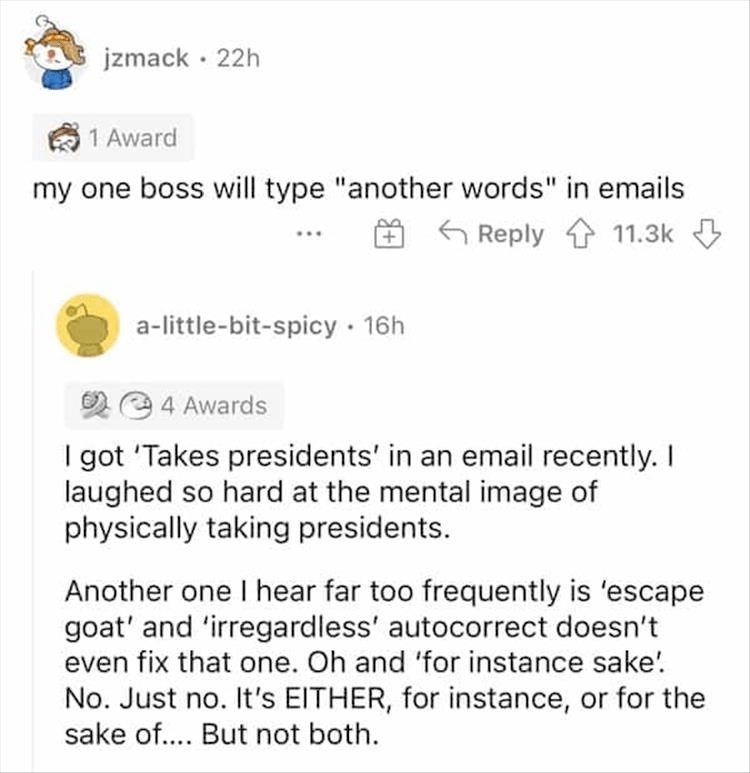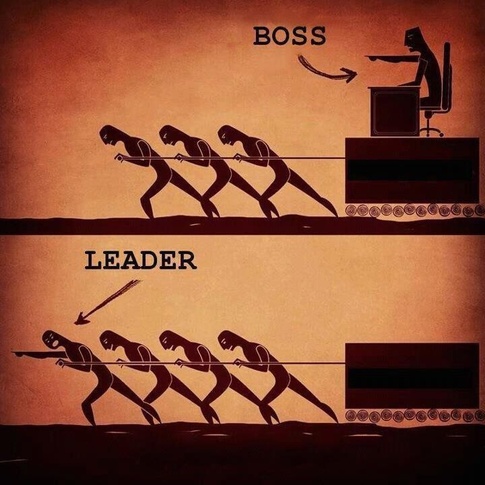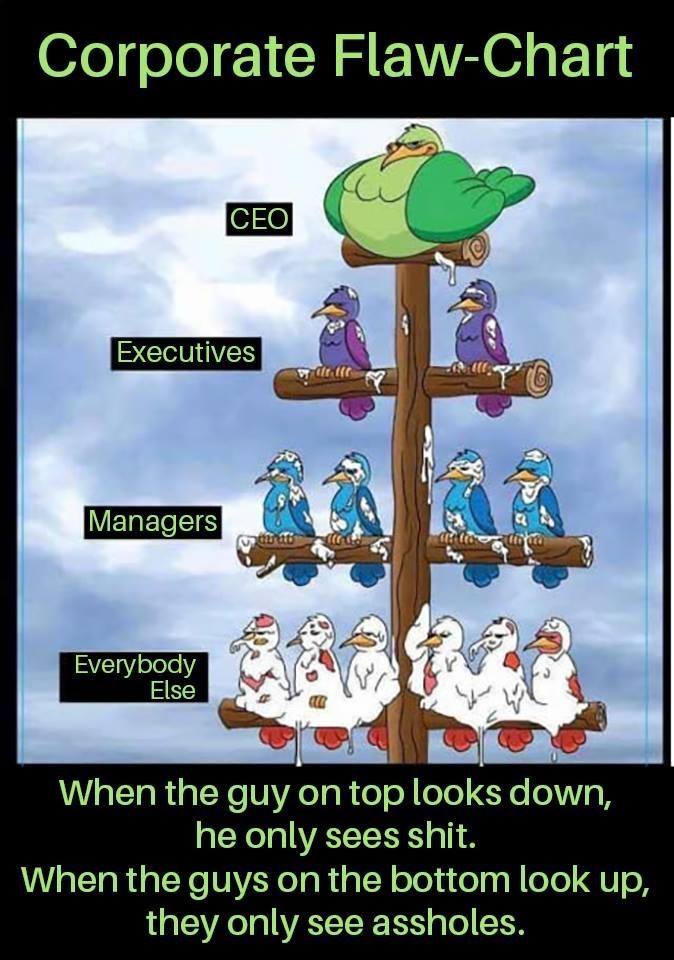 I read a WSJ article on ineffective meetings. It is about the manifesto to end boring meetings.
I read a WSJ article on ineffective meetings. It is about the manifesto to end boring meetings.
This brought back thousands of hours of meetings I wished I could have back or would certainly decline to attend had I realized what I know now. Most of this post is tongue in cheek unlike the WSJ, but I’ll bet everyone wishes they weren’t in so many meetings.
First, let me start out with some quotes I found from The Quote Garden, starting with the one that reminded me most of the meetings I’ve attended:
A committee is a cul-de-sac down which ideas are lured and then quietly strangled. ~Barnett Cocks, attributed

A committee is a group that keeps minutes and loses hours. ~Milton Berle
To kill time, a committee meeting is the perfect weapon. ~Author Unknown
If you had to identify, in one word, the reason why the human race has not achieved, and never will achieve, its full potential, that word would be “meetings.” ~Dave Barry, “Things That It Took Me 50 Years to Learn”
Our age will be known as the age of committees. ~Ernest Benn
If Columbus had an advisory committee he would probably still be at the dock. ~Arthur Goldberg
A committee is an animal with four back legs. ~John le Carré, Tinker Tailor Soldier Spy
It is impossible to imagine the universe run by a wise, just and omnipotent God, but it is quite easy to imagine it run by a board of gods. ~H.L. Mencken
A “Normal” person is the sort of person that might be designed by a committee. You know, “Each person puts in a pretty color and it comes out gray.” ~Alan Sherman
A committee is a thing which takes a week to do what one good man can do in an hour. ~Elbert Hubbard

A camel looks like a horse that was planned by a committee. ~Author Unknown
A committee is a group of the unwilling chosen form the unfit, to do the unnecessary. ~Author Unknown
If you live in a country run by committee, be on the committee. ~Author Unknown
Could Hamlet have been written by a committee, or the Mona Lisa painted by a club?… Creative ideas do not spring from groups. They spring from individuals. The divine spark leaps from the finger of God to the finger of Adam. ~Alfred Whitney Griswold
We always carry out by committee anything in which any one of us alone would be too reasonable to persist. ~Frank Moore Colby
I don’t believe a committee can write a book. It can, oh, govern a country, perhaps, but I don’t believe it can write a book. ~Arnold Toynbee
There is no monument dedicated to the memory of a committee. ~Lester J. Pourciau
Any committee that is the slightest use is composed of people who are too busy to want to sit on it for a second longer than they have to. ~Katharine Whitehorn
Meetings are indispensable when you don’t want to do anything. ~John Kenneth Galbraith
People who enjoy meetings should not be in charge of anything. ~Thomas Sowell
AND OF COURSE, THERE IS BRADLEY’S BROMIDE: “If computers get too powerful, we can organize them into a committee — that will do them in.”
I WORKED FOR “THE” MEETING COMPANY
I worked a large part of my career either for or with IBM, which many have joked that it stands for I’ve Been in a Meeting. I could have been years more productive and retired earlier if it hadn’t been for all of the meetings I’ve spent time in. Projects would have been completed weeks in advance were it not for meetings.
Usually, the meetings were a way to get other people to do your work for you, or to assign work to others they wouldn’t do or volunteer for were it not for the fact that they were at a meeting. The only time this didn’t work was when I actually needed to get a speaker for a press briefing for an interview with Time Magazine when print media was important. His manager, John Callies then VP of Netfinity or X series at IBM(x86 servers), wouldn’t let the speaker leave the staff meeting stating, “it’s only your job” as the reason. See how manage executive ego’s for more on this. I’d have never imagined having to cancel an interview with what was then an important publication due to an executives’ ego. I’ve seen bad manager moves in my time, but this was top 10 worst of the worst for me. He still ranks as the number one suit I’ve ever worked with. The below meme was how it felt to be in a meeting with him.

Execs have also had meetings in places that they wanted to visit (click on the link to see who it is), and most people knew that. That was a waste of travel time and money for a wasted meeting. There were other reasons they had meetings, but read the quotes at the beginning to find out why said were held.
Avoid training meetings, unless it was a way to be busy during a meeting you want to avoid. This is especially true of diversity training. It is a waste of time (same exact meeting every time every year for the required legal reason) but is more important than almost any other meeting, so it serves 2 purposes. No one will go against diversity training for fear of being politically or legally incorrect. It does allow you to miss another meeting and no one pays attention anyway. It’s an opportunity to get work done while the training is going on in the background. Your attendance is recorded so you are twice as effective as you complete your work, earn your mark for training and ignore the same speech you went through last year all at the same time.
MEETING RULES TO SURVIVE
The best way to deal with a meeting is to avoid it. If you can already have a meeting at a time that the scheduler proposes it or be busy and/or somehow away or out of the office. Teleconferencing kills that strategery unless you can be found traveling, but sometimes it’s unavoidable (see how to get out of a meeting below if you have to go). The people calling the meeting are really only people who want the meeting anyway.
For things to do to avoid meetings or how to goof around during a meeting, go to the link How to goof around at work.
HERE IS MY RULE WHEN TO DECIDE TO ATTEND IF I HAD A CHOICE: if there were more than 4 people, don’t go. Nothing will get done other than resulting in another meeting to have to attend. This is especially true if there are more than 1 executives, as each brings a team of competing players who guarantee the death of productivity.
The WSJ agrees with me, but goes on to say that if it has 17 people, there is no chance anything will get accomplished.
Don’t speak at a meeting if possible. It usually wastes time and extends the meeting length. There are only a couple of people who really have something to contribute, the rest want to hear themselves talk, show off their PowerPoint skills to bore you, or think they are more important if they speak. These show offs can be insufferable, but they offer time to check your email at best while pretending to listen.
This is in the department of redundancy department, but it is so important to note is to be careful when attending because the meeting leader’s purpose is to assign their work to others or get people to do work they wouldn’t do because they can’t decline in public (this is a corporate tradition). This further kills your ability to be productive at your real job. There are some who want to look important by accepting work magnanimously to show off, thinking they were climbing the ladder. Gladly accept their offer as most people have 10 hours of work for an 8 hour day anyway. Only accept it if it produces revenue or if you are the only one qualified to do it, but generally don’t, especially if you perceive it as a make work project.
Especially avoid planning meetings. A meeting to plan another meeting is one to be skipped unless you are the project manager and called the meeting, then you have to do it. Avoid these at all costs. Once nobody shows up, the meeting gets cancelled for email updates, which is a far better use of your time. As my grandfather said, they are as common as pig tracks and as useless as teats on a boar hog.
Avoid staff meetings. These are like planning meetings, but they occur regularly and when you miss one, nobody really cares (especially if there are more than 4 people). Only attend them occasionally as you work with these people everyday anyway, it’s not like you don’t know what is going on. Email your boss on a regular basis with your activity and you can plan something more productive during that time.
HOW TO GET OUT OF A MEETING
The tongue in cheek part really goes here. I’ll bet there are folks out there far more creative about this than me.
My favorite methods are to have a customer who needs you. They are your business and that overrides almost everything. Even your boss can’t deny this.
Pre-plan an emergency. I occasionally had another employee phone or knock on the door to call me out (email or text isn’t as good as that is not public enough) to get you out of a meeting. The trick is to never return. You’ll get the notes anyway, I promise. Since I worked with the press and analysts, I sometimes had a co-worker say that a reporter needed me right now. They were my customer and no one could say no. Many times there was no real emergency even if the press did call, it was the best and most efficient use of my time to leave the meeting so as to be actually working instead of being at a meeting. I usually dealt with the press immediately unless I had to do some digging to get back to them.
Attend meetings by phone if possible. You can always put the phone on mute and get your real work done, or surf the web or watch TV, which is usually just as productive. It’s easier to go to the bathroom, which brings me to…
Go to the bathroom. Offer to get a water to others when you go, then take as much time reading the sports page in the stall as you can. You are just as productive as listening to someone prattle on about their project.
Send your meeting information in by proxy. See above where someone is willing to talk. Give them your results or input so you don’t have to be there.
THE KIND OF MEETING TO HAVE
I realize that some meetings are necessary, so I understand that it’s the only way to get some things done. For the other majority of the time, see above.
The best meeting is a hall meeting. You run into the person you need help from and in 5 minutes, you’ve explained your need, what they can do and your time frame for doing it. Problem solved.
I also recommend having meetings with introverts and/or men. They don’t like to talk much (most of them) and want to get it over as quickly as you do. Attire requirements are less of a priority as is small talk.
Here is the net net, don’t go to a meeting if you don’t have to, get out early if at all possible and above all, don’t speak unless you have no option. Consider it a victory if you don’t attend, or a minor victory if you have to attend but don’t come out with anyone else’s work. You are a complete failure if you open your mouth and double your workload on something that is not tangential to your job or career. Enjoy your job more by having the time to actually be productive.









































